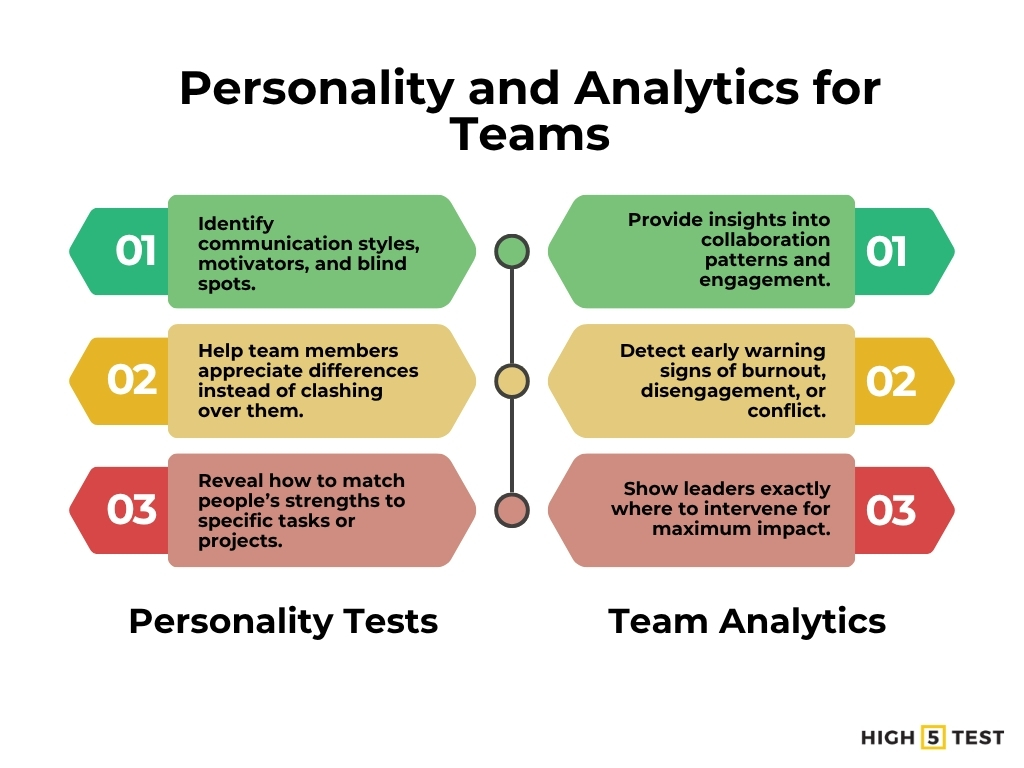If you’re aiming for effective team building for leaders, this guide walks you practically and inspirationally through the exact steps to create a cohesive, motivated, and high-performing team. It’s written for a global audience of professionals and leaders who want clarity, momentum, and measurable results.

Why team building matters in leadership
Team building isn’t just about fun activities – it’s essential for business success. Cohesive teams share knowledge and collaborate to solve problems faster. They adapt quickly when challenges arise, making the organization more agile.
Research shows that companies with agile teams are roughly three times more likely to outperform competitors. Engaging in team-building efforts for small teams also boosts morale. Employees on tight-knit teams report higher job satisfaction and are less likely to quit.
Stronger collaboration, greater adaptability, and higher engagement follow when leaders strengthen bonds and communication. These gains turn individual talents into a synchronized, high-performing unit.
- Improved Collaboration: Team members pool their skills and ideas to innovate and achieve shared goals. This synergy leads to faster problem-solving and better results.
- Adaptability and Agility: Close-knit teams adjust to change with ease. In fact, research shows agile teams are far more likely to be top performers.
- Higher Morale and Retention: Purposeful team-building activities increase trust and satisfaction. Happy, engaged teams deliver higher productivity and lower turnover.
Related: 60+ Communication in the Workplace Statistics (2024/2025)
Proven leadership team-building strategies
Great leaders treat team building as a strategic process. It starts with trust and clear goals. Make sure every member has the skills and understanding needed to succeed. Set clear, shared objectives so everyone moves in the same direction and resists change less. Leaders also foster an inclusive environment, championing diversity and open communication so that all voices are heard. Here are proven leadership practices for building strong teams:
Set clear objectives
Define team goals and roles so everyone knows the plan and their stake in it. When a leader communicates why the team is working toward a goal, members align their efforts and bond over that common purpose.
Encourage open communication
Transparent communication reduces conflict and builds trust. Leaders can set the tone by holding regular check-ins, encouraging candid feedback, and modeling vulnerability.
Strengths-based team development
Instead of focusing on weaknesses, top leaders leverage the natural talents of their team members. By using tools like the HIGH5 Personality Test for Team Building, leaders can identify the unique strengths of each individual and strategically align them with team goals.
Build psychological safety
Teams perform best when people feel safe to share ideas and take risks without fear of judgment. Leaders can establish this safety by rewarding contributions, welcoming diverse perspectives, and treating mistakes as learning opportunities.
Encourage growth
Support continuous learning and constructive feedback. Good leaders mentor individuals and encourage experimentation. This growth mindset shows the team that effort leads to improvement, which boosts confidence and cohesion.
Lead by example
Model the behavior you want to see. Respect all team members, listen actively, and give credit where it’s due. The most effective leaders give support, not orders. Treat teammates as collaborators rather than subordinates. This inspires the same trust and dedication in the team.
Balance individual autonomy with team collaboration
High-performing teams find the right mix between independence and interdependence. Leaders encourage individuals to excel in their roles while ensuring contributions move the team closer to its collective vision.
Combine clear goals, an inclusive culture, strengths alignment, and exemplary leadership to lay the groundwork for a resilient team. Remember that team building is a two-way street. It relies on both leaders and members engaging in trust, communication, and shared purpose. When challenges arise, a foundation of trust helps the team stay united and overcome obstacles together.
Leadership team building activities that work
Practical activities bring team-building concepts to life. Creative exercises and games help teams apply collaboration skills in a fun, low-pressure setting. For example, exercises like leadership races, tower-building challenges, or team puzzles can surface hidden talents and improve communication. These activities are designed to strengthen core leadership skills such as communication, creativity, critical thinking, and trust.
Some engaging team-building ideas include:
Leadership Race
Team members line up and step forward when a leadership trait (e.g., “trustworthy” or “enthusiastic”) is called out. Each person then explains why that trait suits them. This fast-paced game highlights each person’s strengths in real time.
Marshmallow Tower
In small groups, build the tallest possible structure using spaghetti, tape, and a marshmallow. Time pressure and surprise constraints encourage collaboration, creative problem-solving, and quick decision-making.
Blindfold Minefield
One partner is blindfolded while the team guides them verbally through an obstacle course. This trust exercise sharpens listening skills and teaches teams how to give clear guidance.
Leadership Pizza
Have team members draw a “pizza” where each slice represents a leadership trait they value (e.g., integrity, humor). Discussing these personal maps helps the team understand each other’s leadership styles. It turns leadership concepts into a shared conversation.
Book Club or Workshop
Choose a leadership or teamwork book and discuss key lessons together. This shared learning builds a common language around leadership challenges and encourages continuous development.
These hands-on activities break down barriers and make teamwork practice tangible. Rotate responsibilities and mix groups to spot informal leaders and future mentors. The goal is to make team building an ongoing part of work – not just a one-off event – so that the team’s culture of collaboration becomes stronger over time.
Strengths-based team workshops
By using personality tests, leaders gain insights into how team members prefer to work, communicate, and solve problems. Workshops based on these results create shared understanding and appreciation.
Try the HIGH5 Personality Test for Teams to uncover your team’s unique strengths profile.
Role-switching and perspective-taking
Encourage team members to temporarily take on different roles. This builds empathy and helps individuals understand the challenges and contributions of others.
Collaborative problem-solving challenges
Give teams real-world scenarios that require creativity and collaboration. These activities simulate pressure while highlighting natural leaders and communication patterns.
Reflection and feedback sessions with team analytics
Data-driven reflection is more powerful than guesswork. Using HIGH5 Team Analytics, leaders can identify strengths distribution, collaboration gaps, and actionable areas for improvement.
How personality tests and team analytics improve leadership team building
Modern leadership goes beyond intuition, and it’s backed by data. Here’s how personality tests and analytics empower leaders.
Personality tests: Understanding dynamics
- Identify communication styles, motivators, and blind spots.
- Help team members appreciate differences instead of clashing over them.
- Reveal how to match people’s strengths to specific tasks or projects.
Team analytics: Measuring and improving performance
- Provide insights into collaboration patterns and engagement.
- Detect early warning signs of burnout, disengagement, or conflict.
- Show leaders exactly where to intervene for maximum impact.

With the combination of a Personality Test for Teams and Team Analytics, leaders can shift from reactive management to proactive, data-driven leadership. Indeed, companies using strengths analytics see impressive results: one report notes a 39% boost in team productivity and 74% higher engagement when teams actively use these insights. These numbers illustrate how shared, strengths-focused development can raise performance across the group.
Conclusion
Effective team building is an ongoing journey, not a one-time task. As a leader, your job is to nurture that process, set the vision, build trust, and keep shaping the team. Define clear goals, celebrate diversity, and use each person’s unique strengths to create an environment where collaboration thrives. Integrating tools like personality assessments and team analytics can accelerate this process by making your decisions more informed and strategic.
FAQ
What is team building in leadership?
Team building in leadership is the process of creating trust, collaboration, and alignment within a team. It goes beyond activities by focusing on communication, vision, and strengths. Leaders use tools like personality tests and team analytics to understand dynamics and build cohesive, high-performing teams.
Why is team building important in leadership?
Team building is vital because it boosts trust, engagement, and performance. Leaders who invest in team building align people around shared goals, foster collaboration, and reduce conflict. This leads to higher productivity, innovation, and retention, making it a key driver of organizational success.
Why is leadership important to a team?
Leadership gives a team direction, motivation, and accountability. Leaders set vision, guide communication, and ensure each member contributes effectively. Without leadership, teams lack focus and trust. Strong leaders create clarity and cohesion, enabling teams to achieve goals and stay engaged.
How does leadership influence teamwork?
Leadership shapes teamwork by setting the culture for collaboration. Good leaders foster trust, communication, and psychological safety, encouraging members to share ideas and contribute fully. Poor leadership, however, can lead to silos, conflict, and disengagement.
What role does a leader play in team building?
Leaders act as architects and facilitators of team building. They set vision, align goals, and create trust. By recognizing strengths and encouraging collaboration, leaders transform individuals into cohesive, high-performing teams.
What makes a great team leader?
A good team leader communicates clearly, builds trust, and recognizes strengths. They foster psychological safety, resolve conflicts, and balance results with relationships. Great leaders inspire confidence while keeping teams motivated and aligned.
What is the impact of poor or no team-building activities?
Without team building, teams face low trust, miscommunication, and disengagement. Productivity drops as members work in silos, and turnover often increases. Poor team building weakens collaboration and long-term performance.




